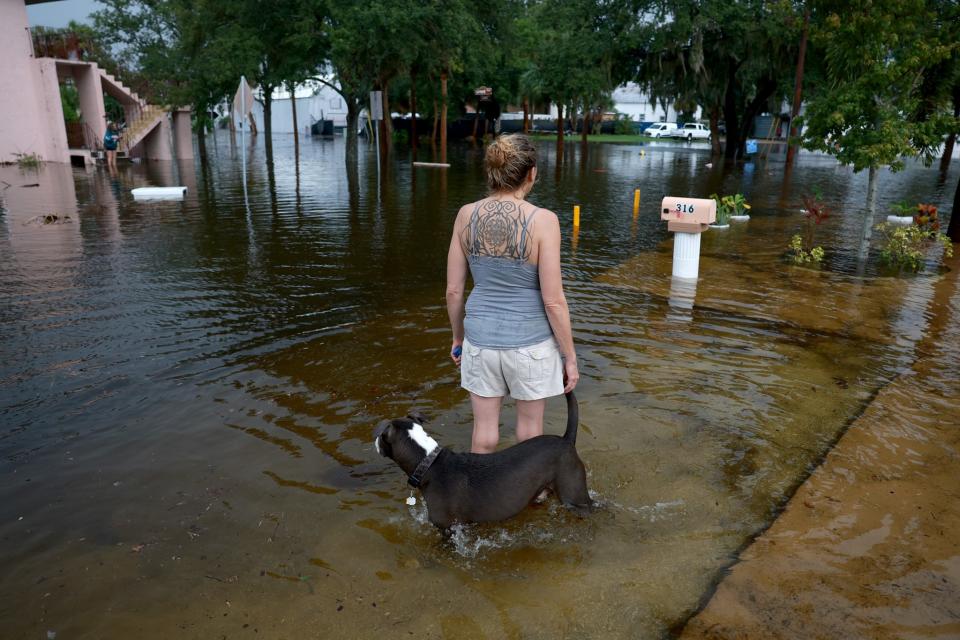Home insurers paid out a staggering $100 billion last year, the most catastrophic financial wrecking ball in over a decade

Home insurance companies are being battered by a costly combination of severe storms and high inflation. They just had their worst year in a decade, with storms costing their business over $100 billion—and customers are suffering for it in the form of higher prices and fewer options, as some companies choose to exit risky markets altogether.
A new report from S&P Global Market Intelligence found that American home insurers posted their worst year since 2011 last year, recording a net combined ratio—or proportion of their total losses to the premiums they collected—of 110.5% (anything above 100% represents a net loss). That represents more than a $101 billion loss overall.
“Inflationary pressures, a devastating wildfire in Hawaii and a record-breaking number of billion-dollar loss events from convective storms weighed on the industry's results in 2023,” said the report.
High inflation has driven up the cost to pay out customers’ claims and has made the reinsurance policies companies buy to protect themselves from losses more expensive. Further, a string of severe storms that caused massive property damage weighed down the industry: Wildfires in Hawaii in August 2023 alone, for example, cost insurance companies $61.5 billion.
As dangerous storms become more prevalent and costly, market conditions aren’t getting any better for the $152 billion home insurance industry.
S&P found that only two of the 20 largest homeowners insurance providers in the country—Chubb and America Mutual Insurance—made money on their home insurance lines last year. Losses across the board have forced insurers to raise rates, passing their costs on to consumers. Increasing prices is the easiest lever insurance companies have to boost returns: Homeowners across the country have faced 10-12% price hikes over the past year, far exceeding inflation.
In some markets, home insurers have ceased business entirely, citing operating costs: In Florida, one of the costliest markets nationwide because of its exposure to Atlantic hurricanes, nine insurers folded or merged with competitors between 2021 and 2023. That lack of competition has only further pushed premiums upward. Other factors have included inflation, more frequent storms, and high price trends in the reinsurance market. Insurers have been paying high rates for policies that protect them in case they take huge losses on a single storm.
“Insurance premiums being charged in the state of Florida have skyrocketed over the last couple of years. Part of it is the reinsurance costs,” Florida State University professor and insurance expert Charles Nyce told Fortune. “Over the last couple of years, it's been really expensive, and some insurance companies can't get it at any price.”
Last year’s hurricane season was relatively mild, which boosted companies’ returns in Florida, one of their biggest markets. But meteorologists are expecting this hurricane season to be exceptionally costly.
“The 2024 Atlantic hurricane season is forecast to feature well above the historical average number of tropical storms, hurricanes, major hurricanes, and direct U.S. impacts,” AccuWeather Lead Hurricane Forecaster Alex DaSilva wrote in a March forecast. “All indications are pointing toward a very active and potentially explosive Atlantic hurricane season in 2024.”
Major hurricanes are far from the only threat, though. Recent deadly hailstorms in Texas and Oklahoma and threats of wildfires out West underscore how more common perils can present costly threats for insurance companies, too—and these types of weather events are only getting more common, turning the screws on insurers even more.
“There's definitely an increased perception of the threat from climate risks,” insurance industry analyst Steve Evans told Fortune.
This story was originally featured on Fortune.com

 Yahoo Finance
Yahoo Finance 